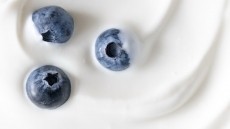UK dairy bid to keep regulators aware of green initiatives
Launching Green and White, Dairy UK director general Jim Begg said: “As our industry embarks on an ambitious new programme of environmental improvements courtesy of the milk roadmap, we realised that there was a need to explain better what we’re doing in this area.”
Begg added that the purpose of the booklet is to influence decision-makers in Whitehall, Westminster and Brussels as well as global lobby groups and dairy organisations.
Dairy UK says it is actively working towards achieving the milk roadmap targets it launched earlier this year in conjunction with the UK’s Department for Environment, Food and Rural Affairs (DEFRA) and other stakeholders to cut carbon dioxide (CO2) emissions and water use.
The industry association said it plans to report on this to the Dairy Supply Chain Forum in October.
Informing regulators
Begg told DairyReporter.com that Dairy UK wants to ensure that the work already been done by the sector is recognised and will be taken into account by regulators when they are drafting any environmental legislation aimed at the industry.
He called for the initiatives to be taken into account in relation to the Government proposals to tighten carbon targets under the dairy sector’s Climate Change Agreement (CCA).
Dairy Energy Savings (DES), which administers the CCA, is calling for more modest tightening of the carbon targets for the dairy industry in line with other sectors.
Gerry Sweeney, chairman of DES, said that while other sectors are seeing their targets for carbon emission savings raised by 4 per cent tonne of product in 2010, the dairy industry is facing a hefty 11 per cent hike.
Sweeny claims that since the CCA system was set up in 2000, the dairy sector has managed to lower its carbon emissions significantly beyond its target.
“These new proposals amount to moving the goalposts. The Government risks sending out the message that success in improving environmental performance will be penalised,” he stated. “Although the dairy industry remains committed to further improving its environmental impact, I believe the targets proposed are unrealistic and could lessen the sector’s motivation to cut energy use.”
Projects
The projects highlighted in the booklet cover areas such as tackling methane emissions through diet, reducing nitrogen fertiliser use, pioneering renewable energy for farms and processing units, improving fuel and transport efficiency, raising energy efficiency, reducing water use and approaching zero waste from factories. Cutting consumer packaging waste and improving energy efficiency in supermarkets are also part of the scheme.
According to Begg, the industry has committed to recycling half of plastic milk bottles back for the same purpose by 2020, as well as a 30 per cent cut in water use, virtually eliminating waste to landfill and generating energy from farm waste.
Methane reduction
Dairy UK admits that methane from the dairy herd is estimated to contribute one per cent of the UK’s total greenhouse gas emissions. However, Begg said some of the UK projects showcased in the booklet are focused on reducing this.
He said that one particular scheme, involving trials by Welsh dairy co-op, First Milk, and animal nutritionists at Keenan Rumans is using a new diet to boost milk yield per cow by up to four litres a day, while lowering overall methane emissions.
Begg said that early results point to a net 20 per cent drop in the amount of gas produced for each litre of milk.
“If these figures could be repeated for the UK’s entire milk output, it would be the equivalent of removing 1.6 million tonnes of CO2 from the atmosphere each year,” he claimed.
Gerald Watkin of Ceredigion, whose herd of 125 cows took part in the pilot said:
“My cows produce more milk and less gas as a result of this new diet. Fibre in the diet means feed is fermented more efficiently in the largest of the cow’s four stomachs – the rumen.”
Financial gains
Begg added that there is a correlation between efficiency gains and environmental focused initiatives.
He said that one of the projects showcased in the booklet involves a Scottish farmer, based in Ayrshire, who is pioneering anaerobic digestion and turning the slurry of 250 cows into enough energy to heat and power his farm, home and processing/ bottling plant.
"The return on investment on this particular project is well ahead of expectation,” stated Begg.













